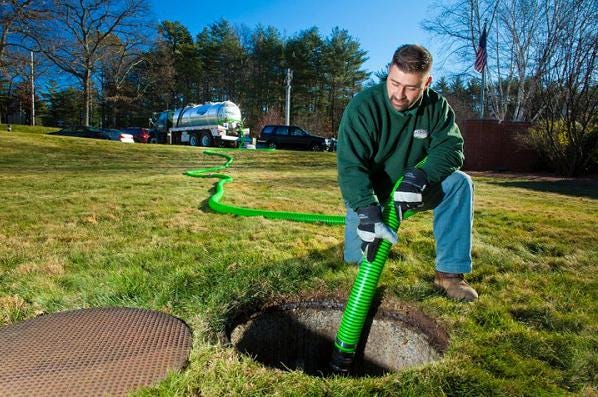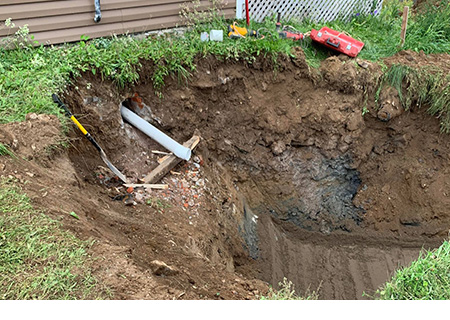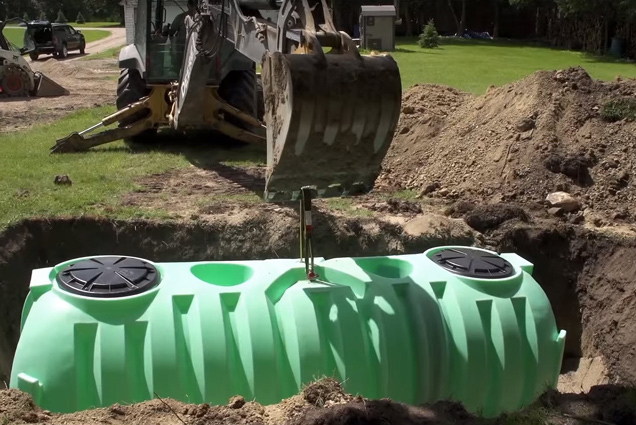Septic Tank How It Works
What's The Next Step For Septic Tank Technology In The Near Future?Many rural residents don't have access to the sewer system of the city. To clean up your wastewater and dispose it correctly, you will need a domestic water system. There are numerous alternatives for home septic tanks. However, all of them do the same thing: they take away garbage from our homes and filter out harmful substances before discharging pure water into the surface water. Costs are influenced by the capacity and size of the tank. The larger tanks are able to reduce the number of chores required due to less liquid being generated each day than smaller models.
How Much Will The Cost Of A Septic Tank?
The traditional Septic tank is an old system that isn't working like it did previously. It can cost between $2,500 and 5K in the United States before factoring permits to install it, and not counting the pipe that will connect your drain field or soil testing requirements! If money is not an issue for you There are two kinds of anaerobic septic tanks. You can also consider buying one of these devices known as "septic system". They're expensive initially, but they last all their lives and require low maintenance.
Aerobic systems need oxygen, which speeds up the process of decomposition and creates significantly cleaner wastewater than equivalents. In fact, this effluent is treated so efficiently that you can even utilize it to make irrigation (provided there isn't another source of water available). Anaerobic aliments also use less space as it requires roughly half as much surface area for leaching fields when compared with traditional system designs - but does come with a cost beginning at around 13000 dollars USD per 1000 gallons processed through treatment tanks annually. See the top how a septic system works for recommendations.

What Is The Cost For The Septic System?
The most cost-effective and lightest solution for septic tanks is plastic polyethylene. A typical cost for 1000-gallon tanks is around eleven hundred bucks. However, leakage can be a concern in some states. They have been prohibited in the US since cracked tanks can lead to costly repairs. The solid concrete Septic system is a durable and long-lasting choice. There have been occasions when the tanks break. However, the cracks are rarely severe. Fiberglass septic tanks are a great choice for homeowners who are looking to lower their costs and still have an easy installation. They are much smaller than concrete and plastic tanks that can be difficult to set up when you have limited space. This reduces house weight and results in better construction.
What Does That Mean For Me Personally?
It isn't easy to understand all the factors that affect your septic tank's cost. You need to understand the installation costs and their cost. NexGen Septics can help in making that decision. We have detailed explanations of everything including soil preparation, permits to maintenance costs. These aspects have a significant impact on determining the total cost for new systems. Check out the recommended septic tanks how it works for more.

Types Of Septic Systems
Making a choice about a septic isn't an easy choice. The type you choose can impact the price of your system, the method of treatment applied and the space you have to put it in. The most popular are:
1.) Anaerobic Septic System
One of the most appealing aspects about a system that is used for cleaning septic is the inability to utilize electricity. Anaerobic bacteria is the type of bacteria the systems use to digest and eliminate contaminants from your water supply. After they've exhausted all nutrients, they then remove them from other sources like household plumbing fixtures or human excrement. This system is simple to set up and can cost between $2k and $5K depending upon what you need. Anyone who has completed any type of homework can be confident in this kind of installation.
2.) Aerobic Septic System
Aerobic septic systems work by using aerobic bacteria to dissolve waste inside the septic tank. A timer and effluent are a pair that can boost the process. However, wastewater will not overflow onto your lawn or crop as anaerobic tank would. These advanced types are approximately $13k-$26k and can be utilized every year for one ton (less than half the amount that is needed by those who use traditional pit toilets).
Septic Tank Types
There are three kinds of concrete: gravel, concrete and plastic. In addition, there are fiberglass-based septic tanks. These are lightweight but strong enough to withstand extreme conditions, such as when they are used in farms and other locations in which water pumps move around. Concrete is another option that is popular due to its weight, which ensures stability and your house won't be drowned by rainwater. These light but strong polyester bags are a great option if you live close to the city limits. Have a look at the top what is a septic tank and how does it work for examples.

Plastic Septic Tanks
Although septic tanks are great for managing your waste, you need to choose one that is durable. Polyethylene is lightest and the most economical kind of septic system that you can purchase. But, they are more likely to explode or break in the future. There have been improvements in plastics that have made polyethylene toilets more durable than ever. If the toilet isn't filled correctly, they could be restricted in California. The cost for 1000-gallon models is dependent the location you intend to put them in.
Fiberglass Septic Tanks
Fiberglass septic tank are light and simple to install. The septic tanks made of fiberglass are resistant to expanding and shrinking and prevents fractures from forming in the tank as time passes. This is in contrast to porous materials like clay-based soil systems. Fiberglass costs can vary depending on the size of the tank. However, they typically cost between $1600 and 2000 for 1000 gallons. There is also a 1 500 gallon capacity option , where the cost increases approximately 50 percent to 100 percent.
Concrete Septic Tanks
Concrete septic systems are long-lasting and robust. For 1,000 gallons, the cost is $1,200. The 1500 gallon tank costs around $1800. A concrete tank has an average lifespan ranging around 15 to 20 years, however it could be much longer based on the type of maintenance.